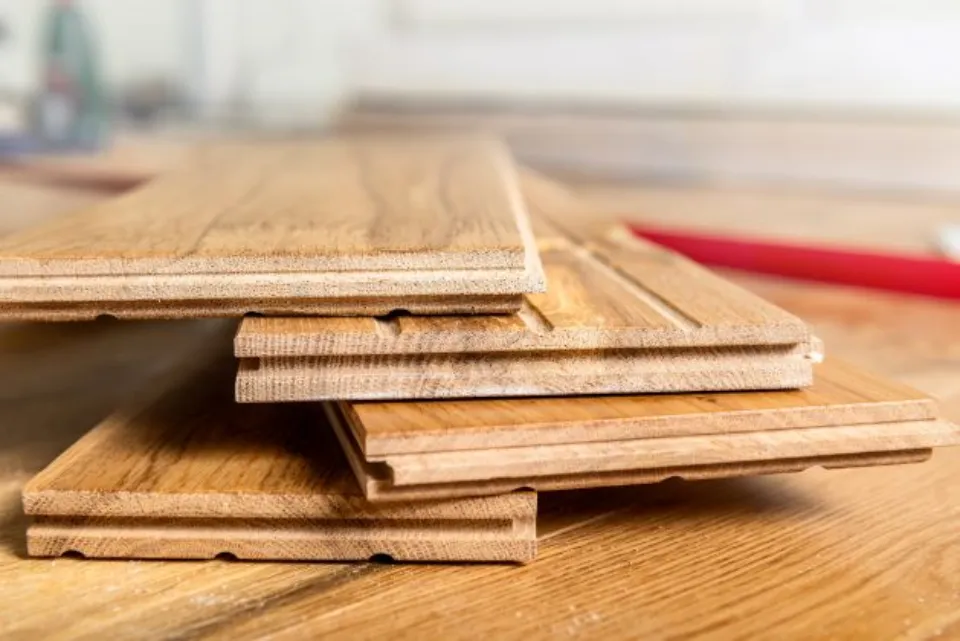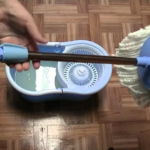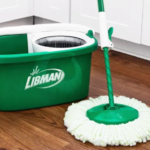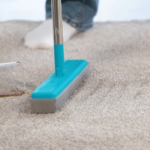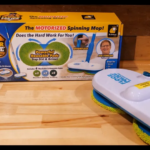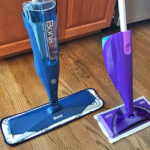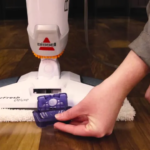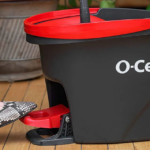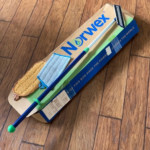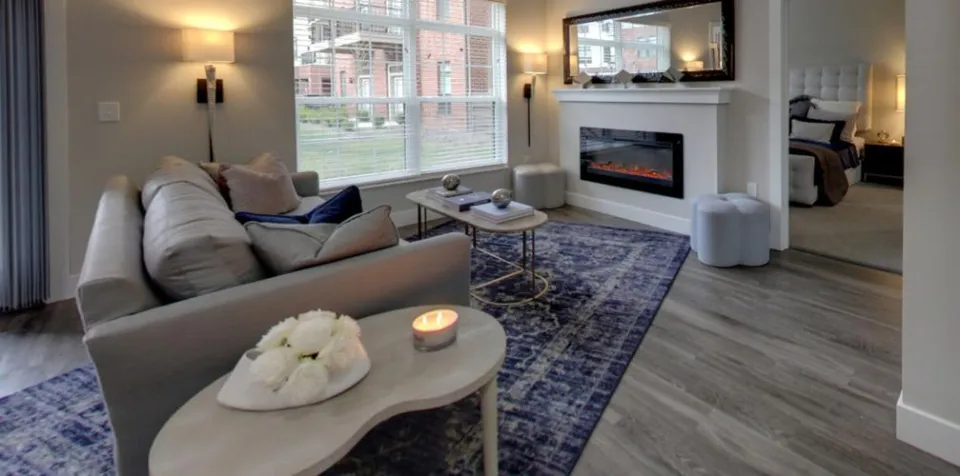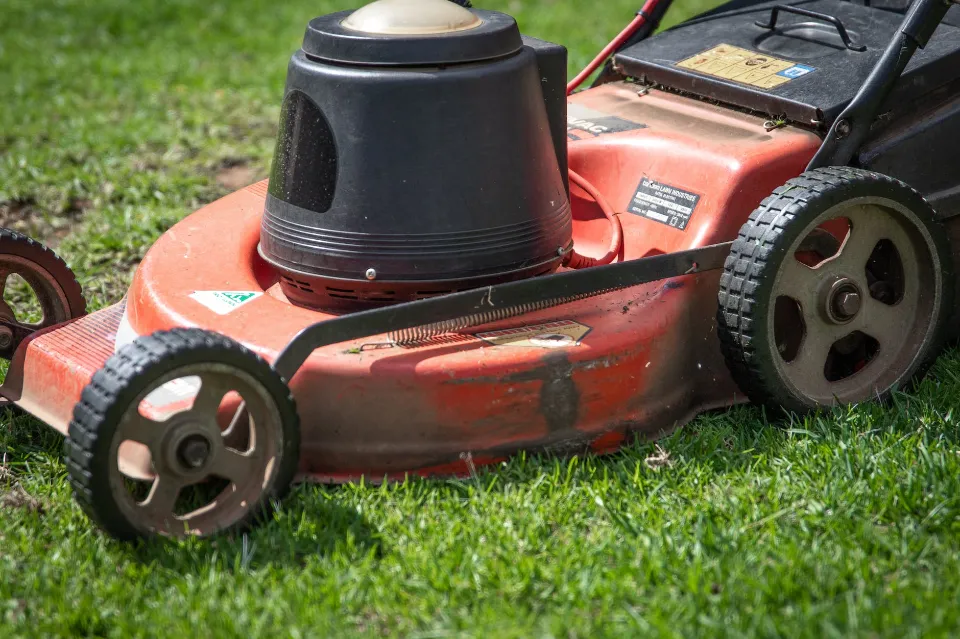Engineered wood is a category of building materials and products that is made up of layers of plywood and solid wood.
Engineered wood boards are generally made from the same hardwoods and softwoods used to manufacture lumber, but mixed with additives like adhesives. This kind of wood frequently uses waste wood from sawmills, and is treated with chemicals or heat to produce wood that meets size requirements that are difficult to find in nature.
What is Engineered Wood?

Simply put, engineered wood products (EWPs) are made from raw wood combined with resins or adhesives. The wood can be scraped, sliced, or recovered as wood chips and sawdust from sawmills. Most resins are artificial. To compress the mixture into a usable form, engineers use pressure and heat.
Engineered wood is also known as manufactured wood, manufactured board, or composite wood. Numerous characteristics of solid wood, such as workability, toughness, and thermal insulation, are generally retained by EWPs. It improves upon it in many ways.
The American Plywood Association, which is still known by its abbreviation APA, was the organization that launched the Engineered Wood Association in 1933. Its mission is to advance EWPs. The numerous applications of engineered wood in construction are described on its website. This product’s versatility has a wide range of additional typical uses.
7 Popular Types of Engineered Wood
Engineered wood products are available as framing members—beams, for instance—and sheet goods, which can be used as sheathing or flooring.
1. Laminated Veneer Lumber (LVL)
Made of wood veneers that are compressed together with resins and glues, LVL is a high density engineered wood product used in framing. Because its veneers are stacked with the grain going in the same direction, LVL is very strong but only has one strength axis. This means that LVL can only be loaded in one direction. (Read More: 10 Best Mop For Laminate Floors – Best Ways to Clean)
2. Laminated Strand Lumber (LSL)
LSL is an excellent engineered wood product that can have an even higher density and be stronger than LVL. It is constructed from tiny wood strips, or strands, that are arranged in a dense, angled pattern. It is made up of 5% resin and about 95% wood fiber. LSL is very resistant to weight and torsion because of the angled pattern in which the wood strips are placed. LSL costs roughly three times as much as dimensional lumber, which adds to its high price.
3. Oriented Strand Board (OSB)
This type of sheet good is formed by combining wood strands or flakes with adhesives and then compressing them. Wide mats are produced, and it works well for load-bearing uses like flooring and roof decking. Not all OSB is created equal; some boards are sanded (like Advantech or Legacy premium subfloor), while others are not. Other OSB boards are not moisture resistant, while some of it is. If there is any possibility that it might warp, make sure you are using premium grade OSB.
In order to prevent buckling when OSB (and plywood) expands and contracts with moisture in the long direction, it is important to note that you should gap all of your ends. Premium subflooring has a pre-manufactured stop on the tongue and groove, which provides the 1/8-inch space between the boards.

4. Plywood
A sheet good manufactured from thin layers (or “plies”) or wood veneer that are glued together. Plywoods have several benefits to builders, since they are made by binding resin and wood fiber sheets to form a composite material whose “cross graining” property provides dimensional stability and makes the strength of the panel consistent in all directions.
Because plywood still expands and contracts with moisture, be sure to gap all of your ends with plywood.
A plywood sheet has two face veneers, so if you see a sheet graded as “AB” that means it is A side with A quality and a side with B quality.
- A: This is the highest quality plywood with a smooth surface free of knots and repairs.
- B: Although some tight knots (under 1 inch) are acceptable, this grade is largely free of them.
- C: Knots and knotholes up to 1.5 inches in diameter are possible in C grade plywood.
- D: The smallest grade allows for 2.5 inch-long knots and knotholes. Any flaws have generally not been fixed with D grade plywood.
- X: An X is used to indicate exterior plywoods. A plywood with a grade of CDX is intended for outdoor use, has a C grade on one veneer and a D grade on the other.
5. Medium Density Fiberboard (MDF)
MDF is created by dissolving hardwood and softwood pieces into fibers, which are then mixed with wax and resin binders and formed into panels under intense pressure and heat. It is typically more dense than plywood and oriented strand board, but just like OSB, there are grades that can withstand water and weather and other grades that cannot.
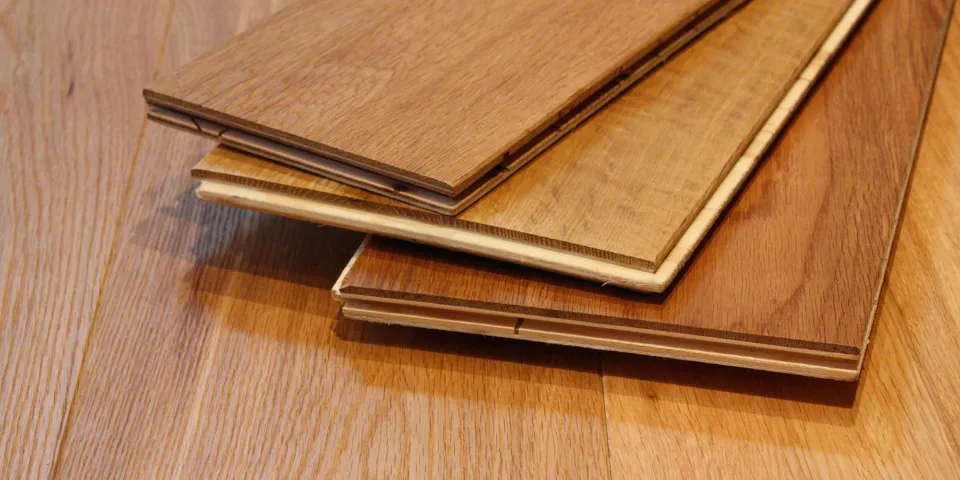
6. Composite Board
MDF and oriented strand board are included in the category of engineered wood. It describes wood that has been heated, extruded, and engineered with both wood fiber and plastic content. It also goes by the name of engineered wood. Since it can be made of recycled materials while using fewer trees, it is simple to install, affordable, and suitable for incorporating into sustainable design.
7. Cross-laminated Timber (CLT)
This wood panel product is created by gluing layers of solid sawn lumber together. Each board is stacked on top of the other perpendicularly, and the wide faces of each board are then adhered with glue to strengthen the structure. The panels’ thicknesses can be easily increased, making it a material with design flexibility. Given that it is constructed of numerous layers of wood, it may serve as a good insulator.
Features of Engineered Wood
The manufacturing process and the inclusion of synthetic resins gives engineered wood these advantages over the real thing:
- Dimensional stability: EWPs that have been created in crisscrossing layers are more durable than actual wood. They are resistant to splitting, warping, and thermal expansion.
- Sustainability: Engineered wood aids in preserving unprocessed forest products.
- Size availability: Engineered wood is more scalable than solid wood products because it is manufactured rather than taken from real trees.
While some products, like LVL, can be more expensive, EWPs typically cost about the same as real wood. Drawbacks to EWPs include:
- Extra weight: Some goods, particularly MDF and composites, are heavier than wood.
- Unattractive: Real wood has a better appearance than OSB, particleboard, and lower grades of plywood.
- Variable moisture resistance: When exposed to moisture, some EWPs, mainly particleboard and MDF, quickly degrade. Although later versions of composite boards compare favorably to wood in terms of weather resistance, earlier versions of these materials swelled after prolonged exposure to the elements.
- Variable workability: Woodworking tools can be used to cut all EWPs, but they cannot all be shaped or sanded. MDF and particleboard both lack the ability to support nails.
Pros and Cons of Engineered Wood
Advantages of Engineered Wood over Solid Wood
Because of its many benefits, engineered wood has become a common type of flooring.
- Because it enables you to obtain (or exceed) the same density and strength of old growth timber using lumber from young trees, engineered wood is sustainable. Because it utilizes every part of the tree, including any flaws or scraps from the process of cutting dimensional lumber, it also reduces waste.
- Due to its high density and layers of grain running in various directions, engineered wood can be stronger than dimensional lumber.
- Engineered beams are available in almost any size; larger members are possible due to the fact that composite materials are used to create them rather than just a single tree.
- In comparison to dimensional lumber, some engineered wood can withstand warping and splitting better.
Disadvantages of Engineered Wood over Solid Wood
- Because of the visible wood strips (instead of the pure, organic appearance of solid timbers), engineered wood is frequently less aesthetically pleasing than real wood. Architectural-grade glulam is an exception to this rule.
- Engineered wood, especially LSL, can cost significantly more than dimensional lumber.
What Type of Wood Do You Need?
Make a decision based on your intended use and location. The selection process also heavily considers the budget. You will be better off shopping in a regular store rather than relying on middlemen because it is difficult to assess the quality of these engineered woods. Utilize this guide to help you select the best type of engineered wood for your house.

How to Use Engineered Wood in Your Home
Today’s homes are using more engineered wood because of its affordability and durability. Multiple layers make up this kind of wood.
Because the top and bottom layers are typically constructed from solid hardwood, engineered wood resembles regular wood in appearance. The core is where things differ: it’s made up of multiple layers of plywood, with the grain of each layer running in opposite directions. The planks of wood are more stable due to this arrangement.
There are so many ways to use engineered wood in your home. You might have fantasies about your foyer having gorgeous wood flooring that is both sturdy and appealing.) wood furniture on the patio. Additionally great for bookcases and even modular kitchen cabinets is engineered wood. However, solid wood, like cedar, or a composite, which can include wood blended with plastic for lower maintenance, may work better if you’re looking to use engineered wood for your deck.
Engineered Wood Vs. Other Options
Solid wood, engineered wood, and laminate can all have a similar appearance. However, there are differences in terms of cost, quality, and durability.
Engineered Wood
Solid wood and plywood are stacked to create engineered wood. Compared to solid wood, it is slightly easier to maintain and more moisture-resistant. While it is more durable than laminate, it also requires more maintenance. In comparison to solid hardwood, prices are comparable but frequently lower.
Solid Wood
Solid wood is exactly what it sounds like: real hardwood planks. Solid wood is the least moisture-resistant of these three types of flooring. It will not do well in humidity, and wet mopping is a huge no-no. Although it is a fairly durable and long-lasting flooring option, it can be challenging for do-it-yourselfers to install.
Laminate
Like engineered wood, laminate is made up of layers. However, these layers also include a base moisture barrier, high-density fiberboard, an image layer made of a high-resolution photograph that resembles wood, and a clear, protective coating. Although laminate is not as strong or long-lasting as solid wood or engineered wood, it is still a practical and reasonably priced alternative.
Cost of Engineered Wood
The price per square foot of engineered hardwood can vary widely. Fewer core layers and lower-quality materials will result in products with lower prices, whereas engineered wood made from high-quality materials will cost about as much as solid hardwood. Costs typically range from $3 to $15 per square foot.
Engineered Wood Maintenance
Although engineered wood floors don’t require much maintenance, it’s a given that they won’t last as long as their solid wood counterparts. The reason for this is that, unlike the thin, top layer of solid wood in engineered wood planks, which can only be refinished once or twice over the course of its lifetime, solid wood can be sanded and refinished numerous times to maintain its fresh appearance.
Solid wood can last 30 to 100 years, while engineered wood is expected to last 20 to 40 years.
Both can be gently cleaned with occasional dry mopping and sweeping, but make sure the cleaner you use to mop is appropriate for the type of flooring you have.
Conclusion: Should You Choose Engineered Wood?
Engineered wood might be a good option for you, depending on your financial situation, project, and lifestyle. Compared to solid hardwood, it is less expensive and offers a reasonable lifespan. If you’re building furniture, think about hiring a pro or choosing hardwood instead of engineered wood because the latter can be difficult on your tools (although the finished furniture will be strong and moisture-resistant). When it comes to flooring, engineered wood offers a high-quality look for less money, but it might need more maintenance than laminate.
Every room needs flooring, which can be chosen from a variety of options depending on the type, color, structure, width, and other factors. Consider the following types of flooring for your family!
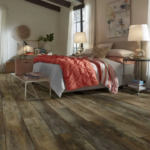
LVP Flooring
LVP flooring is a lovely, affordable, and long-lasting alternative to hardwood flooring.
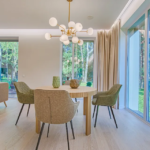
Floating Floor
Floating floors are surfaces that can be installed to literally float above the subfloor or substrate.
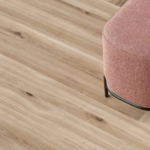
LVT Flooring
LVT flooring has a beautiful design, a high level of durability, and simplicity of upkeep.
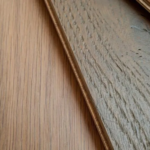
Engineered Wood
Engineered wood products are available as framing members, which can be used as sheathing or flooring.
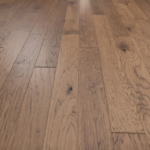
Hickory Flooring
Hickory Flooring has a lighter shade that can brighten a space and it may stretch your budget.
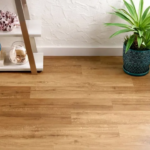
Rigid Core Flooring
Rigid core vinyl is perfect for use in conservatories because its limestone rigid core prevents any unintended warping,
FAQs
Is Engineered Wood Real Wood?
In a nutshell, yes. To understand engineered wood better, imagine it as a sandwich with solid wood in the top and bottom layers and layered plywood in the middle. So while this type of wood is tinkered with a bit (engineered, if you will) it’s made from real wood.
Is Engineered Wood High Quality?
Like many materials, you can purchase engineered wood that varies in quality. For behind-the-scenes work, such as subfloors, some types of engineered wood work best. Other, more expensive options can make fantastic kitchen cabinet or living room floor materials.
Is Engineered Wood Fake Wood?
Real wood is used exclusively in the construction of engineered wood flooring. It also includes a base layer made of composite materials; however, most of the time, this base layer is plywood, which is made from recycled and by-product wood.
Check the following mop reviews before buying!
The Mr. Clean Spin Mop heads work best for dust mopping and absorb too much water for wet mopping. But wringing out the mop is extremely difficult.
When it comes to surface exposure, the Libman Tornado Twist Mop is a far better option than sponge mops. Even with vigorous scrubbing, you can clean with it effectively.
Mighty Thirsty Mop is a quick-absorbing mop made of polymer. Its thin mop head can fit underneath furniture and into other small spaces around the house.
If you have the Floor Police Motorized mop, you can quickly and easily spin away that dirt! The spin mop that does all the work for you is a cordless, lightweight product.
The cleaning efficacy and usability of the Bona Spray Mop are its greatest benefits. Use it to maintain the floors in between more thorough moppings.
With the Bissell PowerFresh steam mop, you can mop more effectively while saving money and combining convenience and power.
O Cedar Mop is incredibly shaky and spills way too easily. If you have to pick up the clean water tank, it will stop spinning and be inoperable.
The H20 X5 Mop won our comparison as the most adaptable mop. This mop effectively removed stains from the floor that had been there for several hours.
The Norwex Mop is available in two sizes (large and small) and three different mop pads. The system is easy to use if you follow the directions.
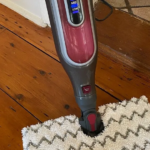
The Shark Steam Mop is a cheap steam mop that does a good job of sweeping and disinfecting floors. This Shark steam mop is a lightweight, simple-to-use steam cleaner.

